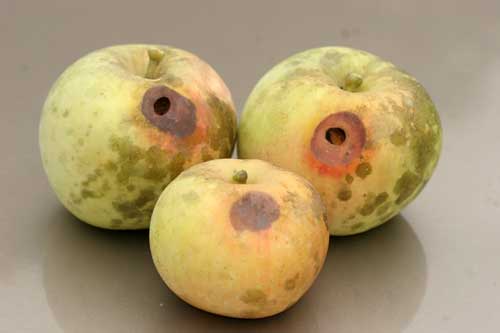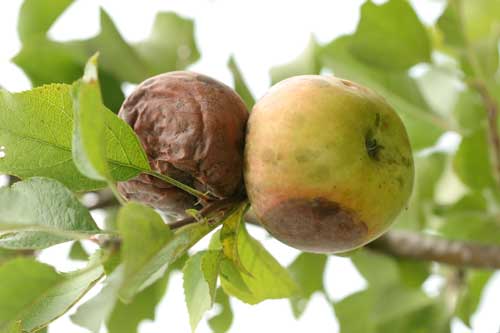Pushing the limits
Growing apples in the South
August 19, 2010 - I am experimenting with low-chill apples at my home in coastal South
Carolina, and have felt that these had some possiblities. I know I'm
stretching the limits of apple range, but I love my apples.
The
oldest tree, a Pink Lady semi-dwarf, is loaded with apples this year. After
some tree training last year, it blossomed well this spring and I got good
pollination. I did some hand thinning, probably not enough.
I've
not felt it necessary to spray - no insect damage on the fruit, and
minimal insect damage on the leaves. It may be that we are so far out
of the normal range of coddling moth and apple maggot that they haven't
found us yet...
I
realize apples are just about impossible to grow organically,
particularly in the Southeast, but my aim is to keep sprays to a
minimum. So far the only spray this year was the dormant oil spray
before the leaf buds broke. This tree is six years old. Its companion
in age is Anna, which has had practically no bloom as of yet. It has
had a bit more shade and has grown more slowly. There are several more
younger apple trees of various low-chill varieties, which bloomed, but
did not set fruit. I also have a young weeping crab, that I hoped would
be a pollenizer.
The fruit has sized up nicely, and other than cosmetic
green spots on the skins (which I can live with), I had
reason to expect a
couple bushels of fruit from this tree.
The fruit is just starting to show
color. However many of the fruits are getting a lesion, which turns into a
rot spot very quickly and spreads throughout the apple within 3-4 days. I
can see my anticipated crop evaporating...
I did some Internet searching,
and find the symptoms are very similar to those described at http://orgprints.org/13668/ on organic
fruit in Europe. So I wonder if it could be Diplodia seriata causing my
problem as well.

The
damage starts as a ring of color, which is almost irridescent. Often a
hole forms in the center of a brown spot which grows until the apple is
consumed.
Weather has been mid-90's,
occasionally 100, high humidity, with quick and heavy showers once or twice
a week.
My question to the apple experts: Is it too late to save the remainder with
a fungicide? What material would
I use?
Meanwhile,
we are trying to salvage as much as we can of the damaged ones, by
adding them to muscadine and peach jams for the pectin - which is
pretty expensive stuff to buy.


